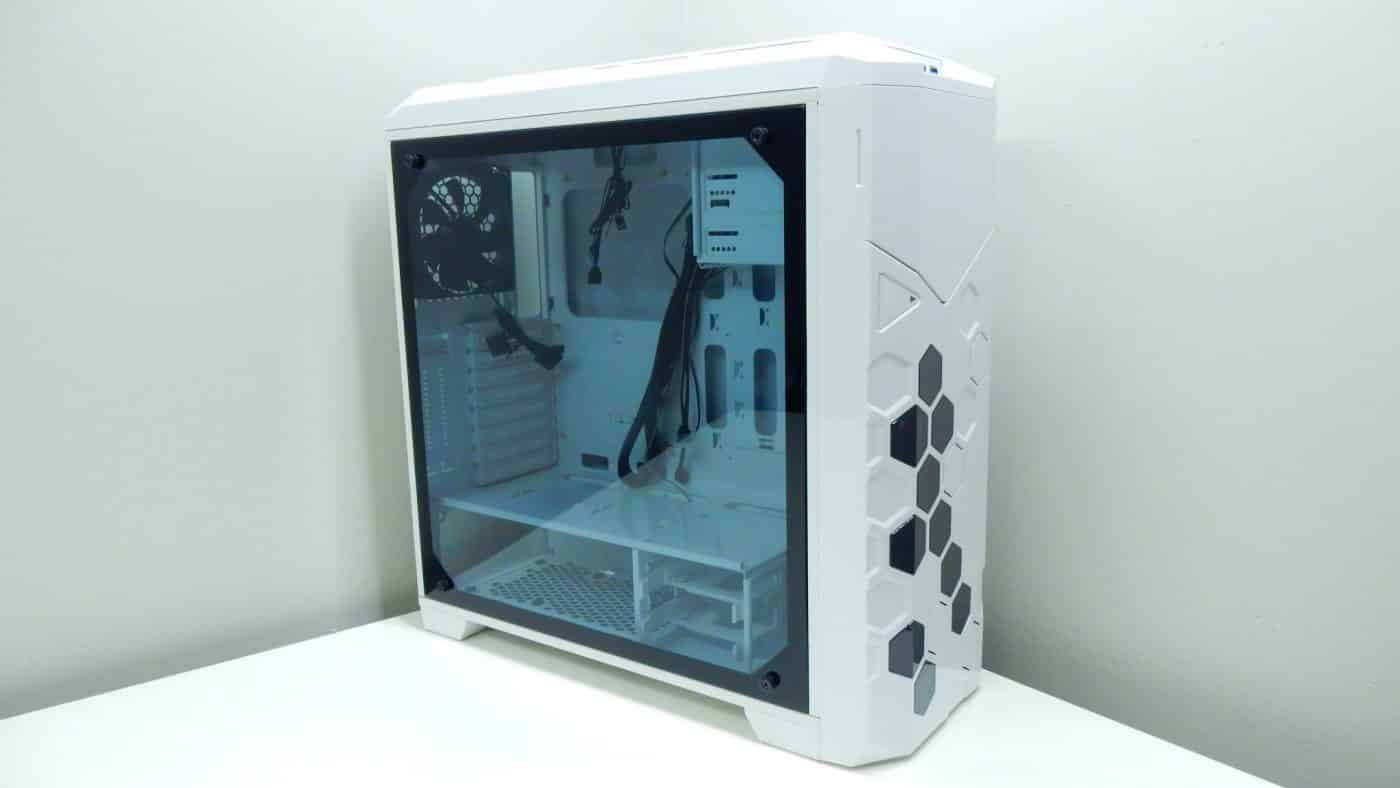Installation
The first component to go into our build was our ASUS Crosshair VI Hero motherboard. The I/O shield snapped right into place, which isn’t always the case. And while AZZA does pre-install a few motherboard standoffs, we had to install a few on our own. This is usually not a problem, but the threads on the open holes had paint in them, making their installation a bit more difficult.
Next up was our videocard, and its installation was no trouble at all. The Storm 6000 utilizes interior screws for the PCIe add-in cards, as opposed to the exterior design that some cases feature.
We chose to mount our 2.5″ SSD on the top of the power supply shroud, so once we removed the tray from the back panel of the interior, we simply slid it into place on the shroud and away we went.
Power supply installation was painless, and all of our required cables found their way through the provided cutout with ease.
The only real issues we ran into during our build were related to the included fans. First was making sure all of our 4-pin LED connections were connected to the “breakout” PCB at the front of the case. While only time consuming, and requiring a bit of extra cable management, the extra set of cables from each RGB fan really adds up. A second issue was that each of the four included 120mm Hurricane RGB fans requires a 3-pin power connection. Thankfully our motherboard had just enough PWM headers to feed our fans. We think it would be great to see a built-in fan controller on the Storm 6000, especially with them including five fans with the case.
With all of our components installed and connected, the interior view of the Storm 6000 was quite nice. When powered up, the glow from the four RGB fans really lights up the white interior of the case. A simple press of a button allows you to cycle between solid LED colors, as well as a fading and flashing mode. If your motherboard provides a 4-pin LED header, the case lighting on the Storm 6000 is more than likely compatible, allowing for fine tuning of colors and effects. Check out our video below showing off the fans.



